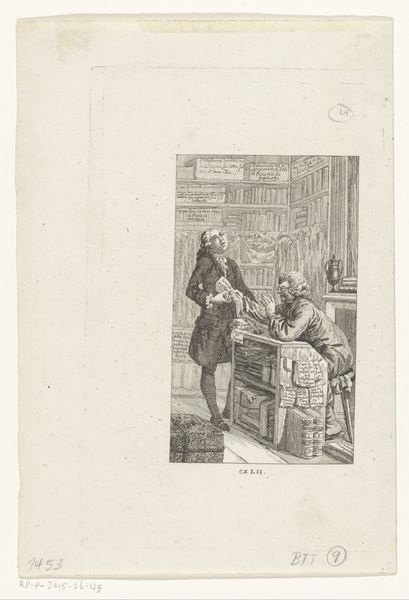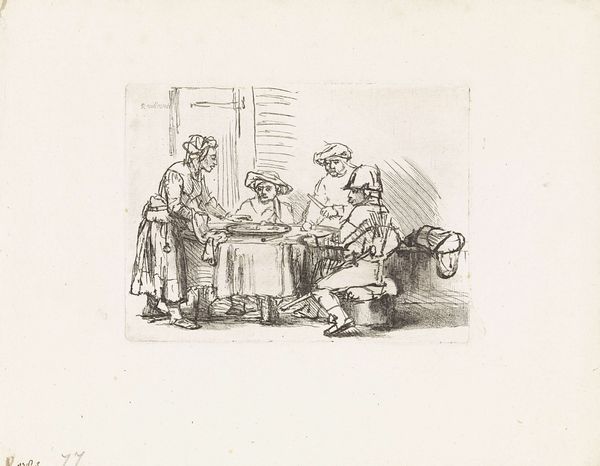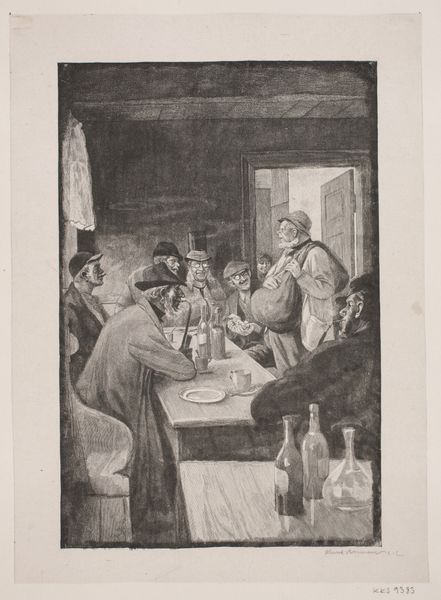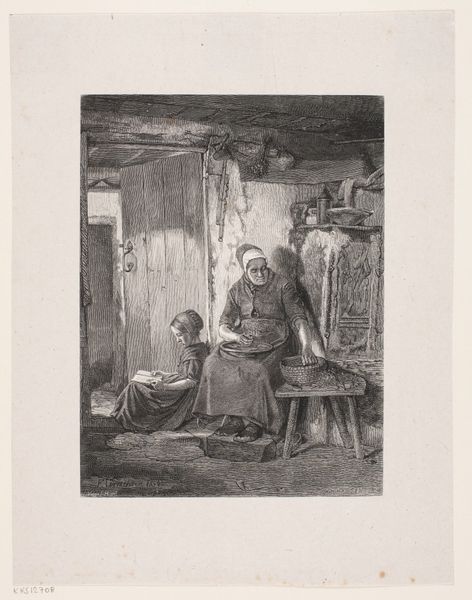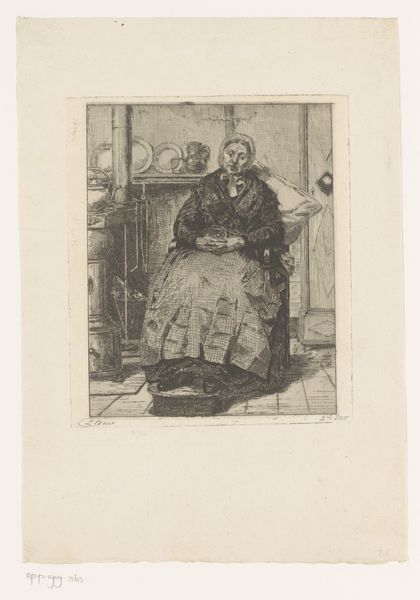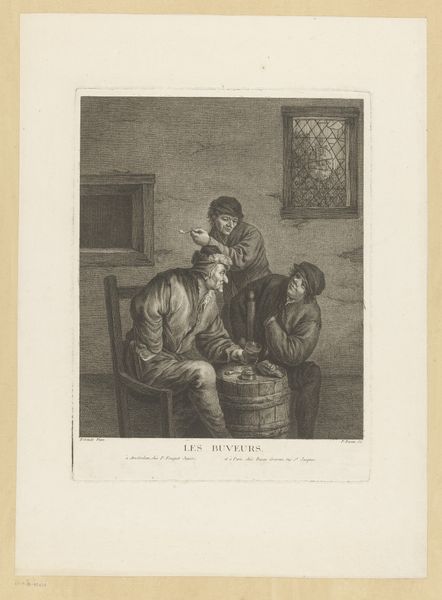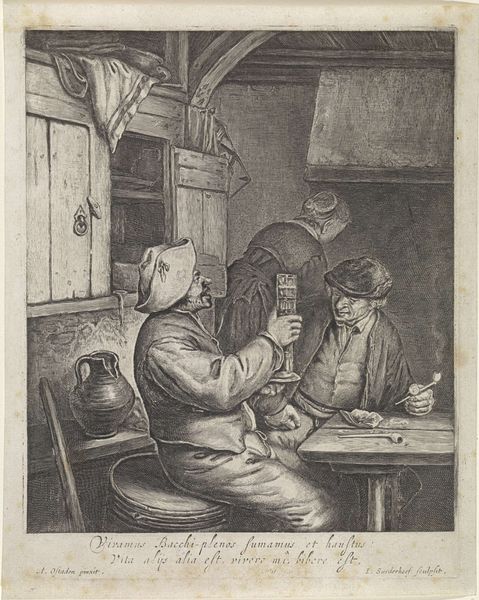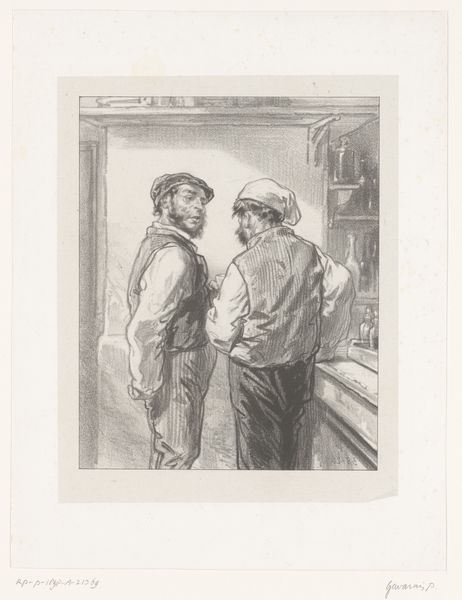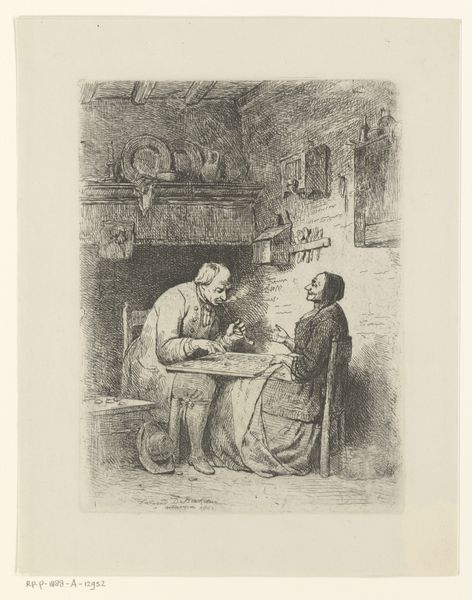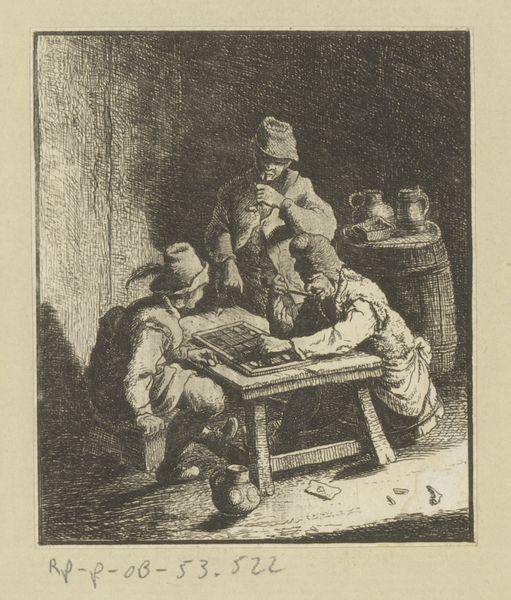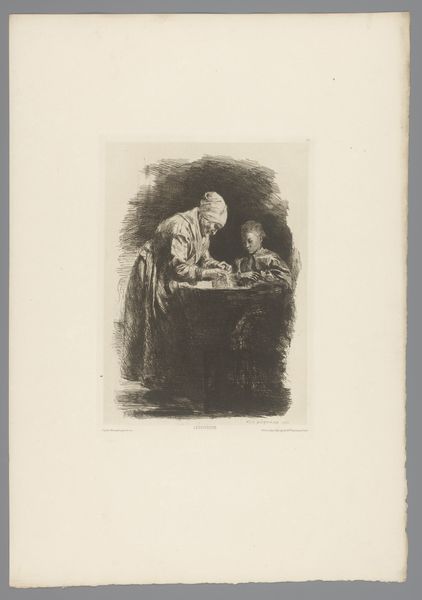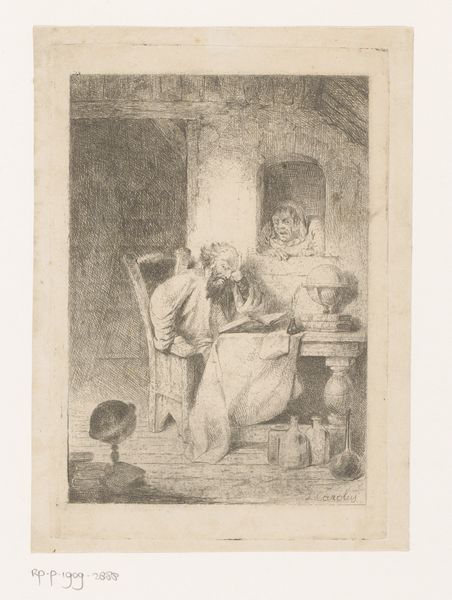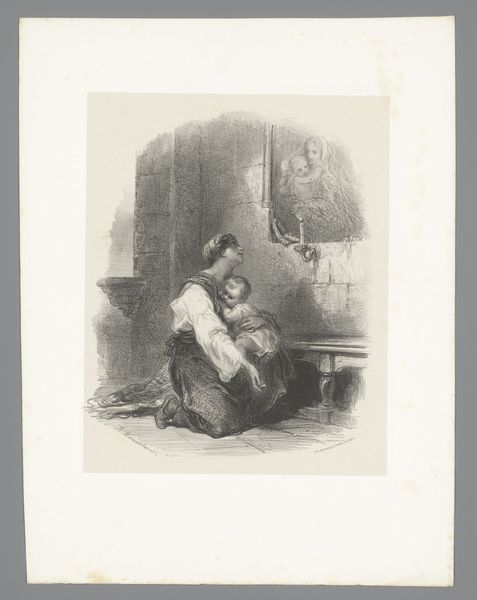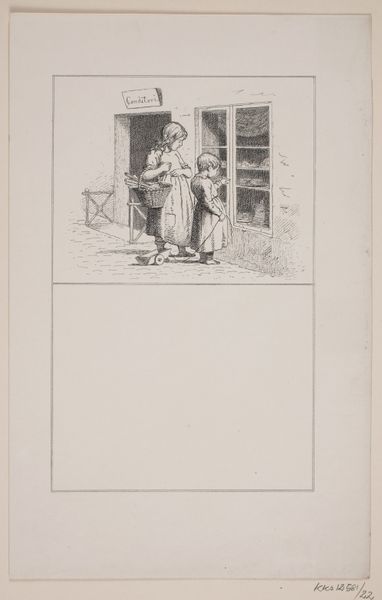
Dimensions: 243 × 190 mm (image); 349 × 275 mm (sheet)
Copyright: Public Domain
Curator: Welcome. Before us is “The Return of the Sailor,” a lithograph and charcoal drawing on paper, crafted around 1900 by Théophile Alexandre Steinlen. The artwork can be found here at the Art Institute of Chicago. Editor: It has a strikingly somber atmosphere. The tonal range of charcoal conveys a sense of quiet weariness, perhaps a touch of melancholy, enveloping both figures in a shared narrative of exhaustion or resignation. Curator: Exactly. Consider the iconographic implications. The sailor—an archetypal figure of adventure and departure—is rendered here not as a hero, but as an old, worn man, head in hand. The print reverberates with cultural memories and perhaps alludes to the often brutal realities that contradicted the romantic image of sailors that existed during that era. Editor: The formal structure also adds to this. Notice how the lines of the wooden table and the woman's form create strong diagonal that draw the viewer's eye downwards. It reinforces a feeling of gravity, weighing down the scene, and even mirroring his own body posture, as he appears to sink even further. Curator: And what about the setting, the humble tavern? The details – stacked plates, simple benches, the lone rooster on the wall—suggest a world circumscribed by routine and domesticity. This starkly contrasts with the vastness and possibility one might expect from the sea. This juxtaposition carries a powerful psychological weight; one wonders about his journey and ultimate destination. Editor: There is also something in the way the light catches on her pitcher versus his muted presence in the background, almost completely covered in charcoal dark lines that hints towards how they each receive what’s left of life after this man returns from his supposed adventures. Curator: Absolutely. The woman, possibly a wife or daughter, becomes a symbol of both burden and stability. Editor: Steinlen’s economy of line contributes much too. Notice the cross hatching—his strategic uses create an image of profound depth and quiet, with just an efficient amount of line work. Curator: Indeed. It’s a deceptively simple image, heavy with historical resonance. Editor: Agreed. Looking more closely really unlocks its multiple layers of complexity, as a poignant exploration into human journeys and domestic resilience.
Comments
No comments
Be the first to comment and join the conversation on the ultimate creative platform.
